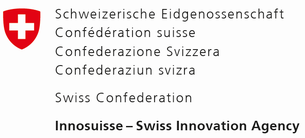
Swisspreneur hosted Markus Okumus, founding partner of Canopei and co-founder of Baze on its recent podcast to discuss the aspect of human resources particularly on hiring and managing teams in startups. In her blog post, Helena Hlas summarizes the most important insights.
You’re a small startup with a low budget and you want a diversified team…no, better yet you want the winning crew! So how do you recruit talent without access to traditional incentives like alluring wages or fame to your name? In our podcast this week we learned from Markus Okumus that the best magnet for talent is a charismatic founder with a meaningful story. Below we discuss important issues your startup could face like if you should hire family and friends, how to distinguish real candidates from copycats and the value of cell management styles. We’ve divided this post up into the following three sections:
Listen to the full episode with Markus here.
Hiring
Values: When it comes to acquiring new talent, understanding the potential for a bond between the candidate and the company is crucial. A strong leader hires on values first and skills second.
When hiring from a value-driven perspective, try understanding the human you’re interviewing rather than the professional next to you. You can do so by introducing your candidate around the office to allow your team to make their assessment of the person behind the CV. Then, if you can, try and engage with them outside the office. Meet on the golf course or the tennis court to see how they react to novel situations and how they interact with others. Rather than focusing on the skill set they preach, get to the root of what is important to them, what they want to achieve in your company and how they connect to your industry.
As is common practice, you can also call former employees and check social network appearances. Remember, the more interviews you do, the better you get at figuring out your gut instincts.
Diversity: In startups, it is natural to hire within your network, and it’s a great place to start! However, when it comes to hiring friends and family know that you’re taking a big risk and the outcome can go either way. Take the same steps you would with any other candidate to first determine whether their values align with the business. Ensuring they are effective problem solvers and won’t mix emotions with rational thinking required in business and employee — boss relations is a crucial element when it comes to hiring people who you have a personal relationship with.
By now it’s common knowledge that diversified teams have better performance. The simple reason is the more diversity, the more perspectives you have. Allow your foundation to grow naturally, based on the perspectives you need to align with your customers. Remember that diversity has many different levels: age, sex, race, social groups and even education strata.
As you scale up, be open to the awareness that you will need different people for different stages. You’re a crew together in a boat, everyone has their role, and everyone needs to survive by executing their job and supporting each other's strengths. Knowing the strengths of each member of your team and their needs allows you to complement each other and collaborate more effectively, stroke by stroke. When building your team, ask yourself if each member contributes to you having a 360-degree view of the company.
A good team has shared values but complementary skill sets.
Growing Pains
Most people figure that companies grow organically. But in reality, when a company grows it doesn’t slowly creep into a market, it jumps. One way of understanding those levels is to look to revenue. 10 million, 30 million and 100 million revenue all requires a different process, jobs and employees. If you want to grow from 30 to 100 million you’re going to need someone on the team who has run a 100 million dollar company before because they’ll know what it takes.
Much like you should be hiring for value, in certain instances hiring people with real-life experience will be crucial. A CEO of a well-established company makes sure to set aside time for hiring by continuously scanning candidates, with up to ten interviews a week, ALL YEAR LONG! That way, you know what is out in the market, and when you have a role that needs filling, you’re not hiring out of sheer desperation.
Of course, as your company grows to maybe triple its’ original employee stack, you’ll need to rebuild the whole structure of the company. This means restructuring communication and taking out informal layers of it, redesignating decision making and organizing the company in a way to accommodate for other technical or market changes.
Daily operation challenges are hard to manage, try practising the following:- Value-driven leadership
- Drive motivation through sales→ , for example, put up screens of real-time sales figures that everyone can see
- Set quarterly goals that are clear and simple to understand
- Create emotional project names that resonate with your team and boost it out to all
- Get out into the heart of the company, be it the warehouse, or developers block and get a picture of what their interpretation of the communication you send out is
- Best way to communicate is always face to face. It allows for team building through small talk and getting a feel for peoples well-being.
In general, cell systems with distributed decision-making authority rather than a top-down approach is the more efficient way for teams to collaborate. One person leads and manages everything in one particular cell. The cells can be divided by markets for example. An independent cell in a market can be highly efficient since the cell can choose the best partners, distributors, etc. based on local conditions. The more independence on the front end the more efficient you are in your setup. Align the cells as often as possible by building platforms that facilitate different groups coming together to create partnerships.
Managing Your Team
Sometimes fast growth in employees can also mean a growth in inefficiencies. Although a good management team will be able to grow together, you’ll find that’s not always the case. Throughout the lifespan of your company, it’s almost certain that you’ll need to either replace someone who isn’t able or willing to grow with your team or you’ll need to reduce your number of employees.
Letting go of an employee can be a hard pill to swallow and unfortunately, that is the nature of business. Focusing on the upside of the change, such that you can consequently stabilize the other jobs, for example, can shine some light onto a darker time in the company.
Further, letting people go who don’t align with your values can also help strengthen the rest of the team. With a termination after misconduct, for example, you will convey that you have the best interest of the company in mind that you’re fair and as always, being value-driven is your company culture. Watch as your team becomes very proud to be a part of it.
Final mentions
All for all means, everyone in your management team has to agree on the new talent hire, if anyone disagrees- it’s off the table. Leave no room for doubts.
Align your team values by talking about them, A LOT. Paste them all over the company and in every email footer then, when you acquire or let someone go, assign your values to the action.























































Please login or sign up to comment.
Commenting guidelines